Museum of Religion and Atheism: A Cultural Insight

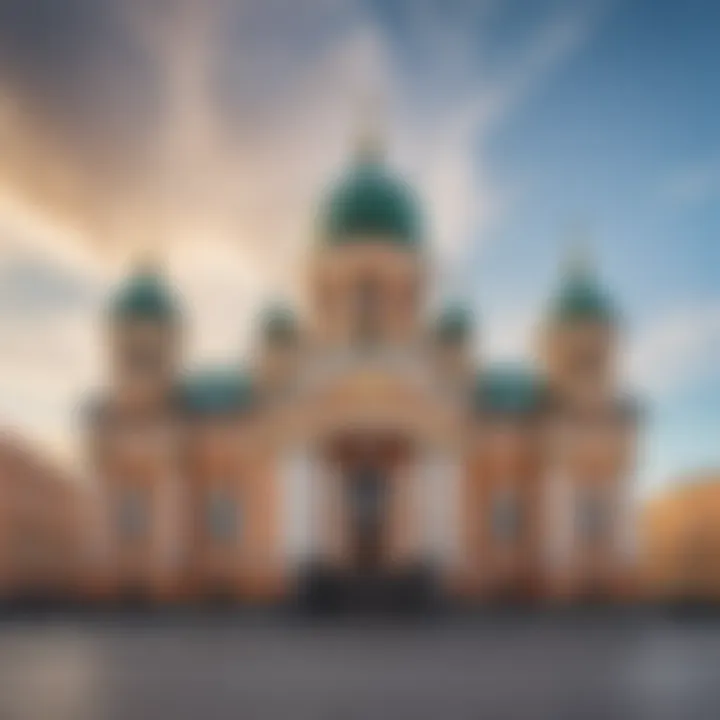
Intro
The Museum of Religion and Atheism in Saint Petersburg stands as a unique intersection of cultures, beliefs, and ideologies. This establishment goes beyond mere exhibitions; it serves as a platform for significant discussions surrounding faith and secularism. Visitors can explore how both religion and atheism shape perspectives within Russian society. Understanding the museum's collections, objectives, and role in contemporary dialogue today can deepen insights into the broader cultural landscape.
The museum is not only a place for artifacts but also a venue for educational programs designed to foster understanding and critical thinking among its visitors. Through engaging dialogues and varied exhibits, it invites exploration into the historical and evolving narratives of belief systems.
In this article, we will delve deeper into various aspects of the Museum of Religion and Atheism: its unique collections, educational initiatives, and its cultural relevance. Additionally, we will look into practical information for those planning a visit.
Engaging with both the religious and the non-religious allows this institution to present a multifaceted view of human belief and existence. These insights not only contribute to academic discourse but also resonate with a diverse audience, from curious travelers to seasoned scholars in the fields of social science and religious studies.
In a world where understanding belief and non-belief is increasingly crucial, the Museum of Religion and Atheism acts as a vital resource for visitors. It is in essence a mirror reflecting the realities and nuances of faith in modern-day Russia.
Foreword to the Museum of Religion and Atheism
The Museum of Religion and Atheism in Saint Petersburg stands as a unique establishment in the cultural landscape of Russia. It serves as a rare platform for the examination of faith, belief, and skepticism. This introduction seeks to emphasize the museum's relevance not just as a collection of artifacts but as a significant space for dialogue around existential questions that have shaped human history.
At its core, the museum aims to explore the complexities of how religion and atheism interact, often in contentious ways. The museum's approach to this subject encourages visitors to reflect on their beliefs. It opens pathways for discussions that may not occur in conventional settings. By investigating historical perspectives, visitors gain insights into how both religious and atheistic viewpoints have developed over time. This understanding is particularly crucial in today's world, where the lines between belief and non-belief often blur.
Both local and international audiences will find value in the museum's exhibitions. The exhibits showcase not only historical items but also contemporary issues pertaining to faith and skepticism. Consequently, the museum promotes a comprehensive understanding of these themes, making it an important educational resource.
In summary, the Museum of Religion and Atheism provides an essential exploration of the intricate relationship between belief and disbelief. Understanding this relationship is fundamental for those willing to grapple with larger questions about existence and meaning.
Historical Background
The Museum of Religion and Atheism traces its origins back to a time when the backdrop of Russian society was undergoing significant transformations. Established in the context of post-Soviet liberalization, the museum evolved from earlier collections that were more focused on religious artifacts. Its foundation arose from a necessity to address the diverse religious and ideological frameworks present in contemporary Russian society.
Originally, much of the discourse surrounding religion in Russia was limited due to state-sponsored atheism. With the opening of the museum, there emerged an opportunity to present a balanced narrative that encapsulates both religious and atheistic experiences. This historical context is vital for understanding the museum’s mission and its relevance today. It allows visitors to appreciate how historical forces have shaped ideological perspectives over the years.
Mission and Vision
The mission of the Museum of Religion and Atheism revolves around fostering an environment for intellectual engagement. The vision is to create a space where both religious and non-religious ideas can coexist. This mission is manifested through diverse collections and programming that encourage exploration of various beliefs.
The museum aims to promote tolerance and understanding, underlining that belief systems are deeply personal yet socially impactful. Furthermore, the vision extends to bridging gaps between different communities, highlighting the significance of dialogue in a world often divided by ideology. Through exhibitions, workshops, and discussions, the museum endeavors to be a catalyst for deeper understanding across the spectrum of belief and skepticism.
Architecture and Design
The architecture and design of the Museum of Religion and Atheism in Saint Petersburg play a vital role in enhancing the visitor experience and reflecting the museum's mission. This space is designed not just for aesthetics but also to invoke thought and reflection. Incorporating elements that connect the narratives of religion and atheism is essential. It not only showcases the collections effectively but also provides a platform for contemplation and dialogue. The careful balance of these elements contributes to the cultural discourse surrounding faith and disbelief.
Exterior Features
The exterior of the Museum of Religion and Atheism is characterized by its unique architectural style, which mirrors the blend of historical and modern influences found throughout Saint Petersburg. The façades exhibit a combination of traditional Russian motifs alongside contemporary design elements, creating a striking visual statement. The building is often described as imposing yet inviting. This invites visitors to explore its contents.
The exterior serves as a canvas, depicting the complex relationship between belief systems and secular ideologies.
Large windows provide glimpses into the museum's interior and encourage passersby to engage with the concepts presented within. The entrance is designed to incorporate accessibility features, allowing all visitors an equal opportunity to delve into the exploration of spiritual and secular themes. Additionally, the surrounding landscaping complements the architecture, featuring sculptures that represent various religious symbols and atheistic themes.
Interior Layout
Upon entering the museum, visitors are immediately struck by the thoughtfully planned interior layout. The design prioritizes an intuitive flow from one exhibition space to another, guiding guests through a narrative arc that reflects the museum's focus on the dualities of belief and non-belief. High ceilings and open spaces create a sense of grandeur that is conducive to learning and introspection.
Each gallery provides a distinct atmosphere tailored to its theme, utilizing smart lighting that highlights key artifacts while fostering a contemplative ambiance. The use of clean lines in display cases draws attention to the collections without overwhelming them.
Moreover, the integration of multimedia presentations and interactive installations enhances the educational experience. This enables visitors to engage with the materials on multiple levels, encouraging thoughtful discussions about the varied aspects of religion and atheism. Spaces for reflection and discussion are also strategically placed throughout the museum, facilitating deeper engagement with the topics presented.
The architecture and design of the Museum of Religion and Atheism not only serve functional purposes but also embody the institution's commitment to fostering an open dialogue on spirituality, belief, and rational thought.
Collection Highlights
The collection of the Museum of Religion and Atheism is pivotal to its overall significance. It serves as an educational resource and fosters deeper understanding of how belief and non-belief intersect. This collection is not merely an assortment of items; it encapsulates the complex history and varied expressions of spirituality and skepticism across cultures and eras.
Artifacts Related to Religion
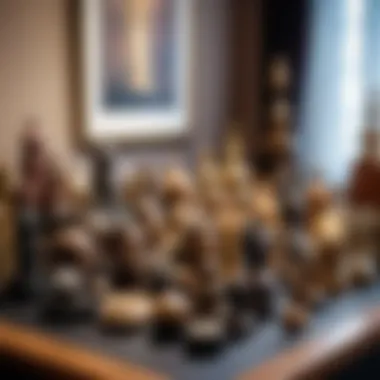
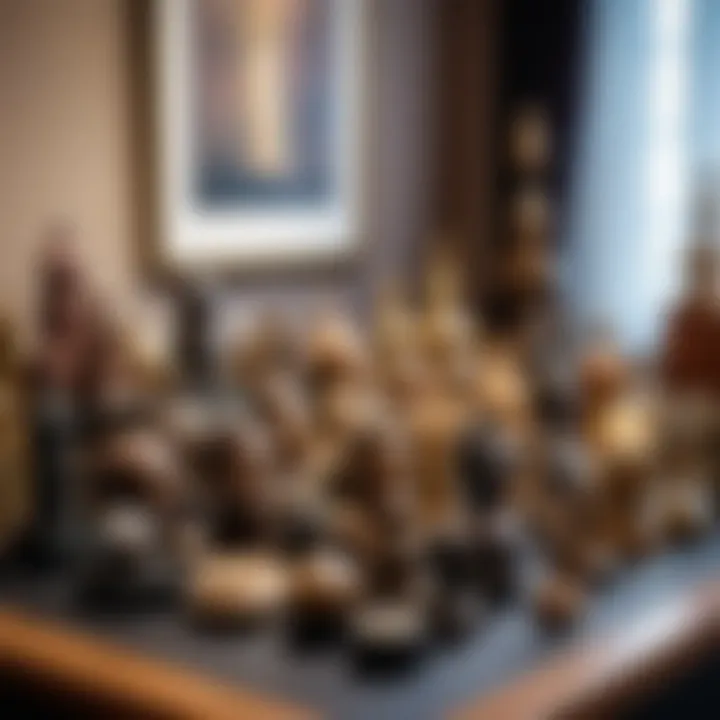
The artifacts associated with various religions are the cornerstone of this collection. Visitors to the museum will encounter a diverse range of items including:
- Religious Texts: Ancient manuscripts, like the Torah and the Gospels, give insight into the foundational beliefs of Judaism and Christianity.
- Icons and Statues: These religious icons from different traditions portray figures of worship and are crucial for understanding the artistic representation of faith.
- Ceremonial Objects: Items used in rituals and ceremonies, such as chalices or prayer beads, highlight the practical aspects of religious practice.
Each of these artifacts is more than a relic; they serve as a medium through which the philosophies, doctrines, and cultural practices of different religions can be examined. Such pieces allow for an exploration of how religion shapes identity and community dynamics.
Items Emphasizing Atheism
In contrast to the artifacts that highlight religious traditions, the museum also prominently features items that embody atheistic thought. Some notable aspects include:
- Literary Works: The collection includes influential writings from prominent atheists, such as "The God Delusion" by Richard Dawkins and Karl Marx's essays, which challenge the existence of deities.
- Philosophical Texts: Works by philosophers like Friedrich Nietzsche provoke thought about morality and existence outside of religious frameworks.
- Symbols of Atheism: Art and objects representing secular humanism provide a visual understanding of atheism as a worldview in modern society.
These elements are crucial for fostering dialogue about non-belief, offering visitors a chance to reflect on their own beliefs and the societal implications of atheism. Understanding these artifacts assists in grasping the complexities of identity in relation to both belief and disbelief.
"Atheism is a belief system that has as much validity as any religion, offering insights into human experience and existence."
Through these collections, the museum contributes to a broader conversation about spirituality, morality, and identity in today's world, positioning itself as a unique institution that transcends traditional boundaries.
Visitor Experience
The visitor experience at the Museum of Religion and Atheism in Saint Petersburg significantly shapes the understanding and appreciation of the institution’s mission. The interactions that patrons have with the museum's collections, guidance, and amenities can elevate their comprehension of complex themes relating to faith and lack of faith. This section covers essential aspects such as the museum's opening hours and admission fees, guided tours, and visitor amenities.
Opening Hours and Admission Fees
Knowing the opening hours and admission fees is crucial for planning a visit to the Museum of Religion and Atheism. The museum typically operates as follows:
- Monday to Friday: 10 AM to 6 PM
- Saturday and Sunday: 11 AM to 7 PM
- Closed: Some public holidays.
Admission fees are relatively affordable. As of the latest data, a standard ticket costs about 300 rubles, while discounts may apply for students and seniors, making it accessible for a broader audience. The museum often offers special deals, such as free entry on certain days. Visitors should verify the latest rates on the museum's official site or social media, ensuring they are well-informed.
Guided Tours
Guided tours significantly enhance the visitor experience by providing context and narrative behind each artifact. These tours are often led by knowledgeable staff or trained volunteers who can impart deeper insights into the collections.
- Availability: Guided tours are usually available on weekends and during peak tourist seasons.
- Duration: Tours typically last about 90 minutes, allowing for an extensive overview of the exhibits.
- Language Options: Tours may be offered in multiple languages, including Russian and English.
Many visitors find that participating in a guided tour enriches their experience by allowing them to engage with the themes of belief and atheism in a more profound way. Additionally, visitors may have the opportunity to ask questions, which can clarify complex topics and lead to engaging conversations.
Visitor Amenities
Visitor amenities are essential for ensuring a comfortable and engaging experience. The Museum of Religion and Atheism provides several features for patrons:
- Cafeteria: A light refreshments area where patrons can enjoy snacks and beverages.
- Gift Shop: Offers books and memorabilia related to the museum's themes, enabling visitors to take home a piece of the experience.
- Rest Areas: Comfortable seating spots are scattered throughout the museum, allowing visitors to rest and reflect on their experience.
Furthermore, the museum strives to be inclusive. Features such as ramps and elevators make it accessible for visitors with mobility issues. These amenities contribute to creating a positive atmosphere where patrons can immerse themselves fully in the experience without distractions.
"A well-planned visitor experience can elevate a museum from just a place of viewing to a space of learning and reflection."
Educational Programs and Events
The educational programs and events at the Museum of Religion and Atheism play a crucial role in expanding the understanding of both religion and atheism. They serve as platforms for engaging discussions, fostering critical thinking, and encouraging diverse viewpoints. Through these programs, visitors can deepen their comprehension of the intersection between belief systems and societal values, which is important in today's multicultural landscape.
Workshops and Seminars
Workshops and seminars organized by the museum are interactive experiences designed to provoke thought and dialogue. These sessions often feature prominent scholars, historians, and specialists who bring unique perspectives on religious and atheistic ideologies.
The workshops allow participants to explore complex topics in an immersive setting. They might cover areas such as the historical implications of atheism in Russian culture or the philosophical arguments surrounding faith. Through collaborative discussions, attendees can challenge one another's viewpoints, enhancing personal insights.
The seminars typically focus on current issues related to belief and non-belief. They aim to provide attendees with analytical tools to navigate today's nuanced discussions about faith, ethics, and morality. The museum's emphasis on dialogue encourages an open-minded approach, valuable for both seasoned thinkers and individuals new to these subjects.
Special Exhibitions


Special exhibitions at the Museum of Religion and Atheism often coincide with significant cultural debates or anniversaries of key historical events. These temporary exhibits broaden the scope of the museum's permanent collection by highlighting specific themes or recent academic research.
Such exhibitions may include rare artifacts, contemporary art, or interactive installations that critique organized religion or celebrate secular humanitarianism. They often receive attention from scholars and the general public, creating opportunities for further learning and discussion.
Moreover, the special exhibitions are frequently complemented by related events, such as panel discussions or film screenings. These collective experiences reinforce the museum's commitment to education, turning visits into multidimensional learning experiences.
"The Museum of Religion and Atheism not only preserves history but also fosters a future where dialogue on belief and non-belief can thrive."
By engaging in these educational programs, visitors contribute to a broader understanding of the complex dynamics between religion, atheism, and society. They can actively participate, gain knowledge, and enhance their awareness, adding depth to their museum experience.
Cultural Significance
The cultural significance of the Museum of Religion and Atheism in Saint Petersburg is multifaceted. It serves as a critical venue for discussing not only the historical context of religion in Russian society but also the evolving dialogue between belief and skepticism. This space contributes to broader conversations regarding the role of faith in modern life and the rise of atheism as a philosophical stance. By showcasing both religious artifacts and representations of atheism, the museum encourages visitors to reflect on their worldviews. Such engagement is crucial in a society that continues to grapple with complex ideological divisions.
Role in Social Discourse
The museum plays a notable role in social discourse, acting as a meeting ground for diverse perspectives on religion and atheism. It seeks to foster discussion on how beliefs shape individual and collective identities. In a country where personal faith and secular philosophies often clash, this institution provides a platform for dialogue.
Visitors can engage with exhibits that stimulate critical thinking about the impact of religion on society, law, and morality. These exhibitions often include debates, panel discussions, and lectures that enhance understanding. Consequently, the museum stands as a crucial facilitator of conversation in a society where many feel uncertain about existential questions.
Intersection of Belief and Knowledge
At the museum, the intersection of belief and knowledge is particularly evident. The exhibits present various viewpoints, encouraging visitors to consider how empirical understanding and faith coexist. Items on display provoke questions around reason, spirituality, and the pursuit of truth.
Visitors often leave with a more nuanced understanding of how beliefs influence cultural norms and societal values. This analytical approach helps demystify both disciplines, illustrating that knowledge and faith need not be in opposition. Instead, they can work together in a harmonious exploration of humanity's most profound questions.
"The Museum of Religion and Atheism invites us to confront our beliefs and understand the context behind them, prompting a vital exploration of knowledge and faith."
In summary, the museum is not just a collection of artifacts. It represents a significant cultural institution that nurtures engagement with challenging topics and supports the ongoing dialogue surrounding faith and disbelief.
Criticism and Controversies
The Museum of Religion and Atheism is not without its share of criticism and controversies. Understanding these issues is essential to grasp the broader implications of the museum's mission and its reception. Critics often focus on how the museum presents sensitive topics such as religion and atheism. The portrayal of atheism can sometimes be viewed as one-sided or lacking in context, leading to accusations of bias. This is crucial for readers because it raises questions about the museum's role in fostering genuine dialogue.
Another point of contention involves how the museum addresses diverse religious beliefs. Many visitors feel that some faith traditions are either underrepresented or misinterpreted. This could discourage audiences from fully engaging with the exhibits. Addressing these concerns adds an important layer to the overall assessment of the museum's impact on cultural discourse.
Moreover, debates around academic freedom have emerged regarding how institutions address faith and non-belief. The museum's approach to these discussions impacts its legitimacy as a cultural institution. Balancing diverse perspectives while remaining informative poses a challenge. Therefore, the public’s perceptions of the museum directly reflect these controversies.
Public Responses
Public responses to the museum are varied and complex. Many visitors appreciate the unique approach it takes to subjects that are too often polarized. However, there are also voices of dissent that highlight potential insensitivity or oversimplification of nuanced beliefs. For instance, some religious organizations have openly criticized the museum for what they perceive as a lack of respect for faith traditions. They argue that this could alienate part of the potential audience.
On the other hand, secular and atheist visitors often find validation in the museum’s perspective. Forums and discussions frequently occur online, particularly on platforms like Reddit or Facebook, where individuals share their experiences. This dialogue enables a community of thinkers to reflect on and engage with the complex intersection of belief and non-belief. Some reviews note that the museum challenges existing stereotypes and prompts visitors to consider differing viewpoints.
Impacts on Visitor Numbers
The criticism and controversies surrounding the Museum of Religion and Atheism have had notable impacts on visitor numbers. Reports indicate fluctuations in attendance based on media coverage and public sentiment. When controversies arise, certain segments of the population might be dissuaded from visiting. Conversely, heightened media activity can also spark curiosity and lead to spikes in attendance.
Consider the effect of educational programs or special exhibitions responding to criticism. These events may draw new audiences interested in understanding the debates surrounding religious and atheistic ideologies.
Ultimately, visitor numbers serve as a barometer for the museum's effectiveness in engaging with the public. It's important to analyze these trends to understand the museum's role in current cultural discussions. The ongoing conversations around belief and atheism will likely continue to affect visitor patterns.
Comparative Analysis with Other Institutions
Understanding the Museum of Religion and Atheism in Saint Petersburg requires a thorough examination of how it stands in relation to similar institutions worldwide. This comparative analysis not only highlights unique characteristics but also illustrates broader cultural and societal implications. By situating the museum within a global context, we gain insights into the diverse ways belief and non-belief are interpreted through exhibits and educational frameworks. This section will explore the significance of comparative analysis, emphasizing both the distinctiveness of the Saint Petersburg Museum and common trends found in similar organizations around the globe.
Similar Museums Worldwide
Several museums globally serve as platforms for exploring themes of religion, spiritual beliefs, and atheism. Notable examples include:
- The Museum of Atheism in Prague, Czech Republic, which provides an in-depth look into the history and philosophy of atheism within the cultural framework of Eastern Europe.
- The British Museum in London, England, though broader in its focus, has significant collections dedicated to religious artifacts, offering comparative narratives about different faiths.
- The Museum of World Religions in Taipei, Taiwan, represents a dialogue among various beliefs, fostering understanding and tolerance.
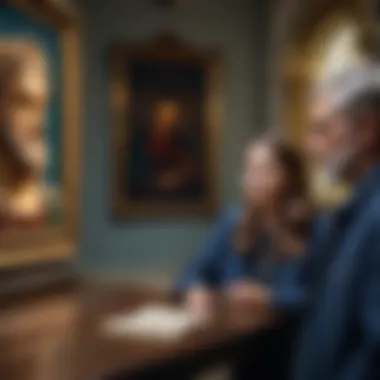
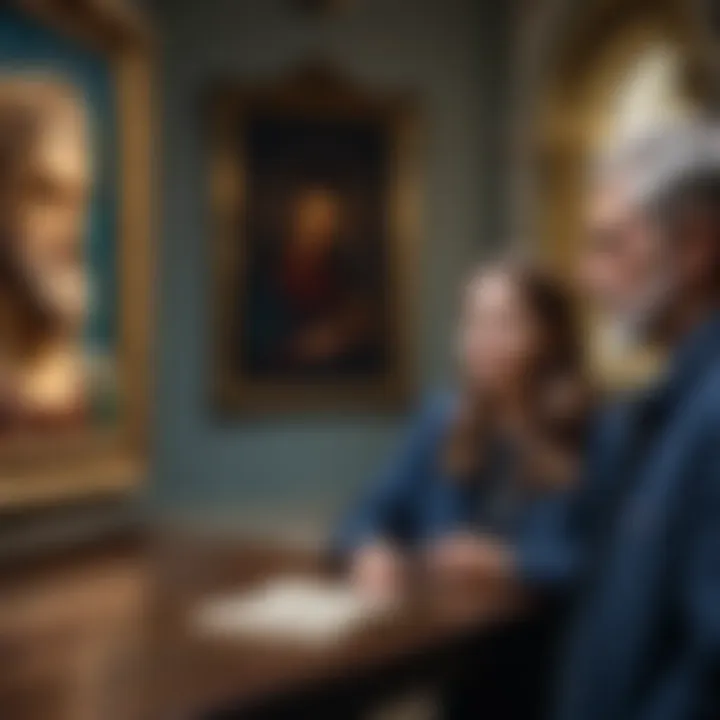
These institutions contribute to a global discourse, capturing the complexities surrounding belief systems today. Their exhibits often reveal not just artifacts but also human experiences and perspectives on spirituality.
Unique Aspects of the Saint Petersburg Museum
The Museum of Religion and Atheism stands out for its unique approach to discussing both faith and skepticism within the same framework. Some of its distinctive features include:
- Dual Focus: Unlike many museums that may emphasize only one perspective, this museum navigates the intricacies of faith and atheism, presenting them as part of a broader conversation.
- Russian Context: The museum provides insights tailored to the Russian experience of religion, particularly in the post-Soviet era, making it relevant to contemporary societal debates.
- Interactive Exhibits: Many displays encourage critical thinking, urging visitors to engage with the subject matter rather than passively observe.
"By addressing both religious and atheist narratives, this museum not only educates but also challenges personal beliefs and societal norms."
Through this comparative analysis, it becomes evident that the Museum of Religion and Atheism in Saint Petersburg occupies a critical space among its counterparts. It fosters an environment where dialogue about religion and atheism may flourish, providing an enriching experience for all visitors.
Future Directions
The future directions of the Museum of Religion and Atheism in Saint Petersburg are crucial for its continuity and relevance. As a space that engages with complex themes of belief and skepticism, it is vital for the museum to respond proactively to the shifting societal views on religion and atheism. By exploring new exhibitions and educational programs, the museum can foster dialogue and understanding among diverse audiences.
Planned Exhibitions
The museum aims to introduce several planned exhibitions that reflect contemporary issues surrounding religion and atheism. These exhibitions will focus on:
- Interfaith Dialogue: Showcasing the interactions and dialogues between different faiths can help promote tolerance and understanding.
- History of Atheism: An exhibition dedicated to the philosophical underpinnings and historical development of atheism aims to educate visitors on this often-misunderstood worldview.
- Global Perspectives on Religion: This will include artifacts and narratives from various cultures, examining how religion shapes identity worldwide.
- Current Societal Issues: The museum plans to address current issues such as secularism, fundamentalism, and the role of religion in modern life. This will make the museum an active participant in contemporary discussions.
These exhibitions will not only attract visitors but also create a platform for discussions and interactions about critical themes in society today.
Adapting to Changing Societal Views
To stay relevant, the museum must adapt to the evolving context of belief systems. Changing societal views on religion and atheism necessitate fresh perspectives and approaches. Considerations include:
- Inclusive Programming: The museum will likely focus on inclusivity in its programs to accommodate diverse beliefs and opinions.
- Collaboration with Scholars: Engaging with theologians and atheistic philosophers will aid in creating content that reflects current academic thought and debates.
- Community Engagement: Hosting community discussions and events can invite diverse voices and perspectives, enhancing the museum's role as a facilitator of dialogue.
"Engagement with the community creates a space for informed conversation, bridging gaps between differing beliefs."
In summary, the future directions of the Museum of Religion and Atheism are not just about expanding their exhibitions but also about fostering an environment that encourages broad discussions. This approach positions the museum as a significant player in the ongoing conversation about belief, knowledge, and society.
The End
The conclusion in this article serves as a vital culmination of insights regarding the Museum of Religion and Atheism. It encapsulates the main findings and reflects on the broader implications of this unique institution. Understanding the museum's roles in presenting both religious artifacts and atheistic viewpoints is essential. This duality invites visitors to engage in critical thinking about belief systems and the nature of faith.
Summary of Findings
This article highlights several key points about the Museum of Religion and Atheism. The museum not only showcases a wide array of artifacts but also provides a setting for dialogue about religion and atheism.
- The historical context of the museum emphasizes its significance within Russian culture.
- Its unique collections illustrate the complexities of belief.
- Educational programs promote understanding and inspire discussion among diverse audiences.
Overall, the museum reflects a balanced approach to controversial themes, encouraging exploration beyond mere acceptance of traditional narratives.
Final Thoughts
In closing, the Museum of Religion and Atheism represents more than just a repository of artifacts. It acts as a catalyst for conversation about conflicting ideologies. The museum promotes the importance of understanding diverse perspectives in an increasingly polarized world. As visitors leave, they carry their newfound knowledge and insights, contributing to their personal journeys through beliefs and skepticism. In this sense, the museum truly fulfills its mission of bridging gaps in social discourse.
Articles and Journals
A variety of scholarly articles and journals are fundamental to grasping the broader scope of religious studies and atheism. These sources offer contemporary research findings, critiques, and case studies that can enhance understanding.
- "Religious Studies Review": This journal often publishes peer-reviewed articles that dissect various aspects of religion and its impact on society.
- "Journal of Atheism and Secularism": Provides research focusing directly on atheism, secular practices, and related socio-political trends.
These articles will help visitors and scholars alike to engage with the ongoing academic discourse surrounding the themes represented in the museum's collection.
Books and Publications
Books and monographs related to religion and atheism offer comprehensive insights into theoretical underpinnings, historical accounts, and critical reflections. Titles that might be particularly beneficial include:
- "The God Delusion" by Richard Dawkins: An influential work that critiques religious beliefs and argues for atheism.
- "A Secular Age" by Charles Taylor: Explores the role of religion in contemporary society and its evolution over time.
Such publications can provide context and background, enhancing the visitor's experience while nurturing a more profound understanding of the themes the museum engages with.
Official Museum Sources
Official publications from the Museum of Religion and Atheism itself are paramount for accurate information. Their brochures, exhibition catalogs, and online resources impart specifics about current exhibitions, visitor guidelines, and educational initiatives. For instance, visiting their official website helps prospective visitors plan their trip effectively and stay updated on upcoming events. Furthermore, the museum often releases official statements and reports that might be relevant for understanding its impact and relevance in cultural discussions.







